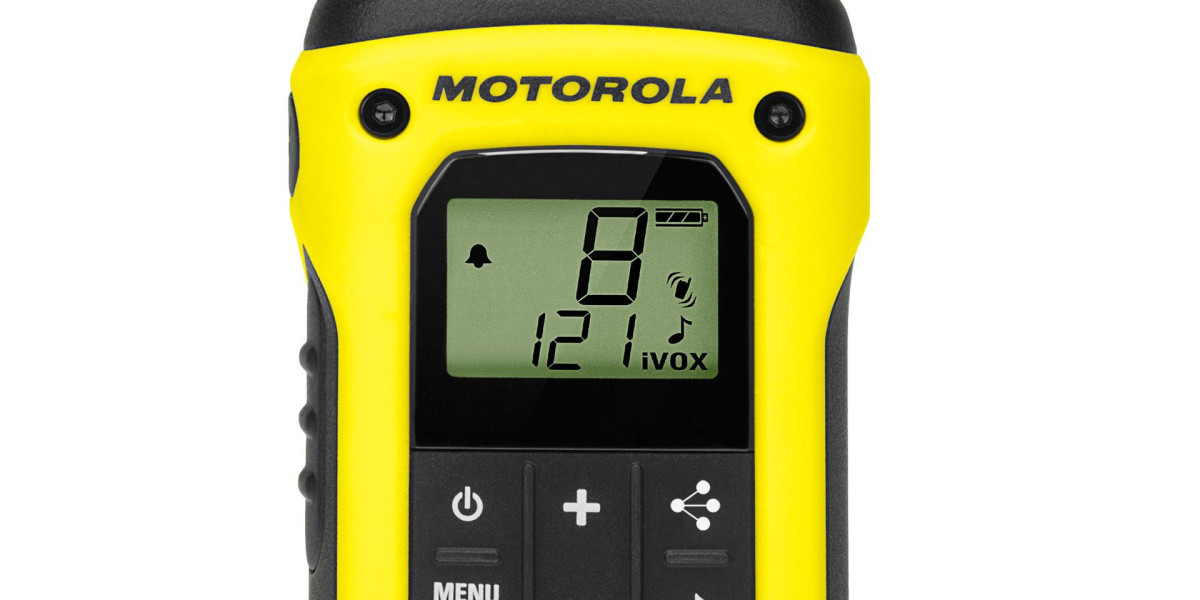When it comes to personal safety, communication, and self-defense, two tools often come to mind: walkie talkies and taser guns. While both serve different purposes, they are crucial in various situations, from outdoor adventures and work environments to self-defense scenarios. In this post, we’ll explore both of these devices, how they work, their advantages, and how they can be used effectively in everyday situations.
What is a Walkie Talkie?
A walkie talkie is a portable, two-way radio that allows users to communicate over short distances. These devices operate on specific radio frequencies and are used in various environments, including outdoor adventures, work sites, and security purposes. Walkie talkies are favored for their reliability and ease of use, especially when immediate communication is required.
Types of Walkie Talkies:
Two-Way Radios: The most common type of walkie talkie, used for simple communication with a push-to-talk button.
Digital Walkie Talkies: These offer clearer voice transmission and can often support longer distances and encrypted communication, suitable for business or security applications.
Weather-Resistant/Waterproof Models: These are designed for outdoor use, offering better durability and protection against harsh weather conditions.
Benefits of Walkie Talkies:
Instant Communication: Walkie talkies provide immediate communication without the need for a cellular network or Wi-Fi, which can be unreliable in certain areas.
Durable and Reliable: Built to withstand tough environments, they are especially useful in outdoor activities like hiking, camping, or construction work.
Affordable: Compared to cell phones, walkie talkies are generally more cost-effective for communication in areas with poor mobile service.
Multiple Channels: Many walkie talkies have multiple channels, allowing different groups to communicate on different frequencies without interference.
Popular Uses:
Outdoor adventures (hiking, camping, skiing)
Construction sites for team communication
Event management and security
Emergency preparedness for situations where cellular service is unavailable
What is a Taser Gun?
A taser gun is a self-defense tool that uses electrical pulses to temporarily incapacitate a person. Taser guns are designed to protect individuals by subduing a potential threat without causing long-term harm. These devices have become increasingly popular among law enforcement officers, security personnel, and civilians looking for non-lethal means of self-defense.
How a Taser Gun Works:
A Taser fires two small, dart-like electrodes that are connected to the device by wires.
Once the electrodes make contact with a target, the Taser delivers a high-voltage, low-current electric shock.
The shock disrupts the nervous system, causing the target to lose control of their muscles temporarily, allowing the user to escape or control the situation.
Benefits of Taser Guns:
Non-Lethal: Tasers offer a way to subdue a threat without causing permanent injury, making them a safer alternative to firearms in many situations.
Effective: With a range of about 15 to 30 feet (depending on the model), Tasers can incapacitate a person from a safe distance, reducing the risk of physical confrontation.
Easy to Use: Taser guns are relatively simple to operate, with most models featuring a trigger mechanism similar to that of a firearm.
Legal: In many regions, Taser guns are legal to carry for self-defense, though regulations vary by country or state.
Popular Uses:
Personal Self-Defense: Used by civilians for protection against attackers.
Law Enforcement: Officers use Tasers to subdue suspects without resorting to deadly force.
Security Personnel: Guards use them to ensure the safety of individuals in high-risk areas.
Walkie Talkies vs. Taser Guns: Comparing the Two
While walkie talkies and taser guns serve different purposes, they both play vital roles in communication and personal safety. Let’s look at their differences:
Feature | Walkie Talkie | Taser Gun |
Purpose | Communication tool for short-range use | Self-defense tool for incapacitating a threat |
Usage | Outdoor activities, security, work environments | Personal safety, law enforcement, security |
Operation | Push-to-talk radio communication | Fires electrodes that deliver an electric shock |
Range | Typically 1-50 miles, depending on the model | Typically 15-30 feet |
Power Source | Batteries (rechargeable or replaceable) | Rechargeable battery or replaceable cartridges |
Safety | Safe, non-threatening | Non-lethal but can incapacitate for several minutes |
Regulations | Legal in most areas | Regulated by laws that vary by region |
How to Choose the Right Tool for Your Needs
For Communication: If you need a tool for staying in contact with a group, whether you’re on an outdoor trip or working in a large facility, a walkie talkie is an excellent choice. It’s an easy, reliable way to keep everyone informed.
For Self-Defense: If your primary concern is personal safety and you want a non-lethal way to protect yourself, a Taser gun might be the right tool. It provides a safe distance between you and a potential attacker, increasing your chances of escape without causing lasting harm.
For Both: In some situations, both tools can complement each other. For example, in a dangerous situation, a walkie talkie can help you communicate with others while a Taser gun can offer a layer of protection if you find yourself in direct danger.
Summary
Both walkie talkies and taser guns are essential tools when it comes to safety and communication. Walkie talkies are ideal for ensuring communication in areas where cell service is unreliable, such as outdoor adventures or work sites. On the other hand, taser guns provide an effective and non-lethal means of self-defense, giving you the ability to protect yourself from threats without causing permanent harm. By understanding how both tools work and their uses, you can make informed decisions based on your needs.
Key Takeaways:
Walkie talkies are ideal for maintaining communication over short distances in areas where cell service is weak or unavailable.
Taser guns offer non-lethal self-defense by incapacitating a person with an electrical shock, offering protection from potential threats.
Both tools are effective in their respective areas—walkie talkies for communication and taser guns for personal safety.
FAQ's
1. Are walkie talkies effective for long-distance communication? Walkie talkies can provide communication over long distances, but the range depends on the model and terrain. In open areas, some walkie talkies can reach up to 50 miles, but obstructions like mountains and buildings can limit their range.
2. Is it legal to carry a Taser gun for self-defense? The legality of carrying a Taser gun varies by region. In some countries or states, they are legal for personal use, while others may require special permits or prohibit them altogether. Always check local laws before purchasing or carrying a Taser.
3. Can a Taser gun be used in rainy conditions? Most Taser guns are designed to function in wet conditions, but you should avoid using them in heavy rain or when the target is heavily clothed, as the electric shock may not be as effective.
4. How long does a Taser gun incapacitate a person? The effects of a Taser are temporary, typically lasting 5 to 30 seconds, depending on the model. During this time, the target will be unable to move due to muscle spasms caused by the electric shock.
5. Can I use a walkie talkie while wearing gloves? Yes, many walkie talkies are designed to be used with gloves, especially models made for outdoor or industrial use. However, some models may require you to press a button or operate a dial that could be challenging with thick gloves.







